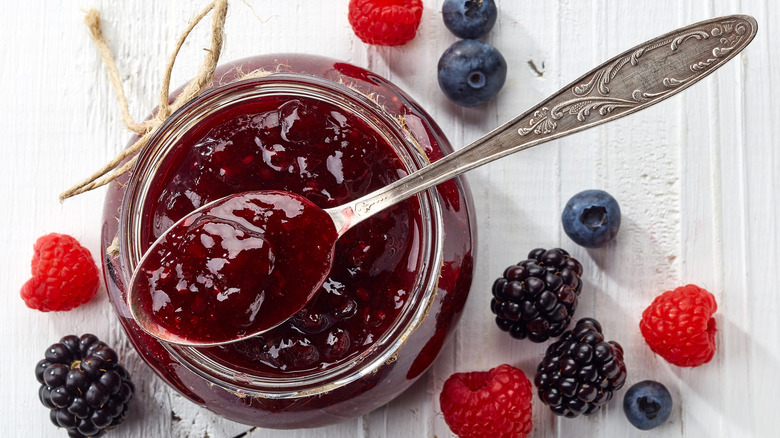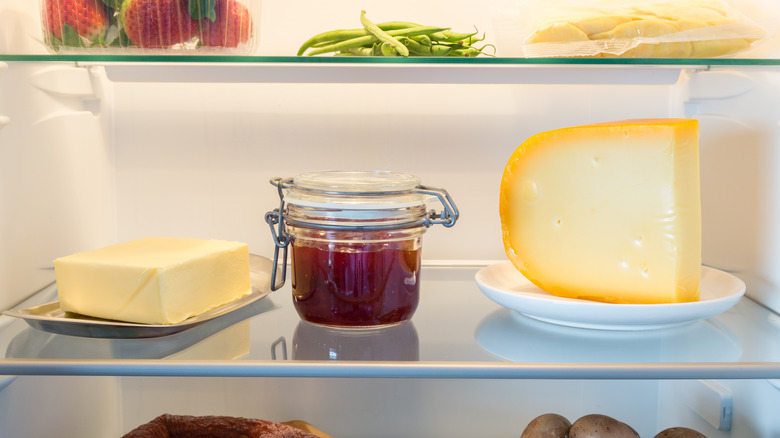Does A Sprinkle Of Sugar On Top Of Jams And Jellies Prevent Spoilage?
Jam usually lasts a long time: Store-bought jams, jellies, and other preserves can last for up to a year in your pantry if unopened, according to the U.S. Department of Agriculture. After opening, these products can then last up to six months in your fridge. Similarly, homemade jams and jellies can potentially last up to two years in your pantry, depending on the preparation method used, and they will then will last up to three months in the fridge. According to some, you can further prolong this time by sprinkling a layer of sugar on top of the jam; while this is partially true, the method is risky.
Generally, jam's long shelf life can be attributed to its high sugar content, which acts as a preservative and helps prevent the growth of mold and yeast. This is why grape jelly is going to last way longer in your fridge than a bag of grapes. Unfortunately, sprinkling sugar on top of your jam isn't a foolproof method for prolonging your preserves' time in the fridge; sugar doesn't stop every type of bacteria from growing, and by leaving jam in your fridge for too long, you could be unnecessarily exposing yourself to a potential illness.
How to best prevent jam and jelly spoilage
While the high sugar content in most preserves can prevent spoilage to a degree, certain species of microorganisms have adapted to living in high-sugar environments. These species, called osmophiles, include yeasts and molds and are found not just in jams and jellies but also in other high-sugar environments, such as concentrated fruit juices, syrups, and some candies. They cause spoilage over time — so, rather than sprinkling a layer of sugar on top of your jam and hoping for the best, follow some storage best practices to keep foods like these at their highest quality for as long as possible.
When storing your preserves in the pantry, opt for a cool, dry spot far from any direct light. Likewise, once opened, pop these products into the fridge. Keep an eye on expiration dates and look for obvious spoilage signs, such as mold growth or weird smells. In general, just try to eat your jams and jellies before they go bad — you potentially have a year and a half, after all.

